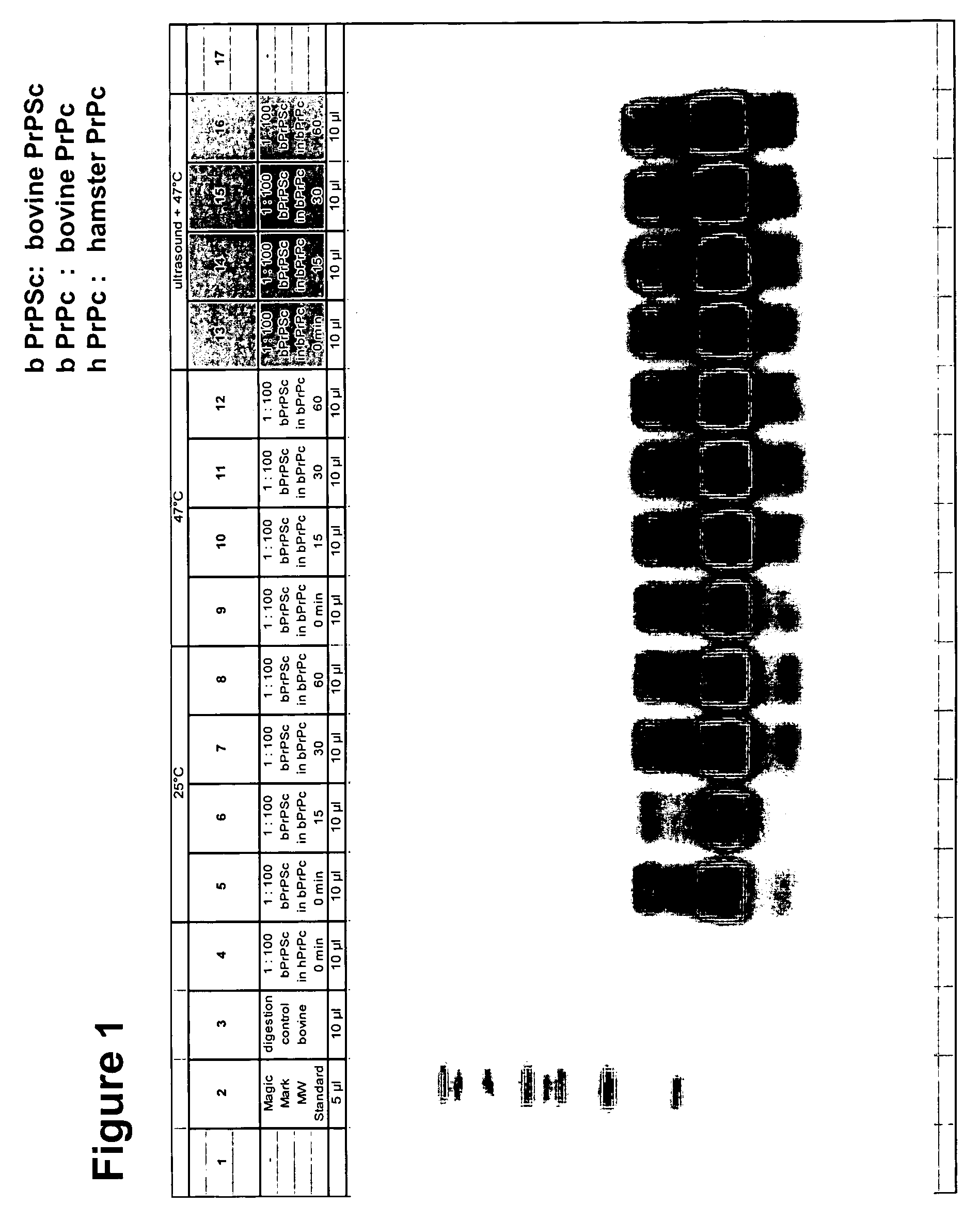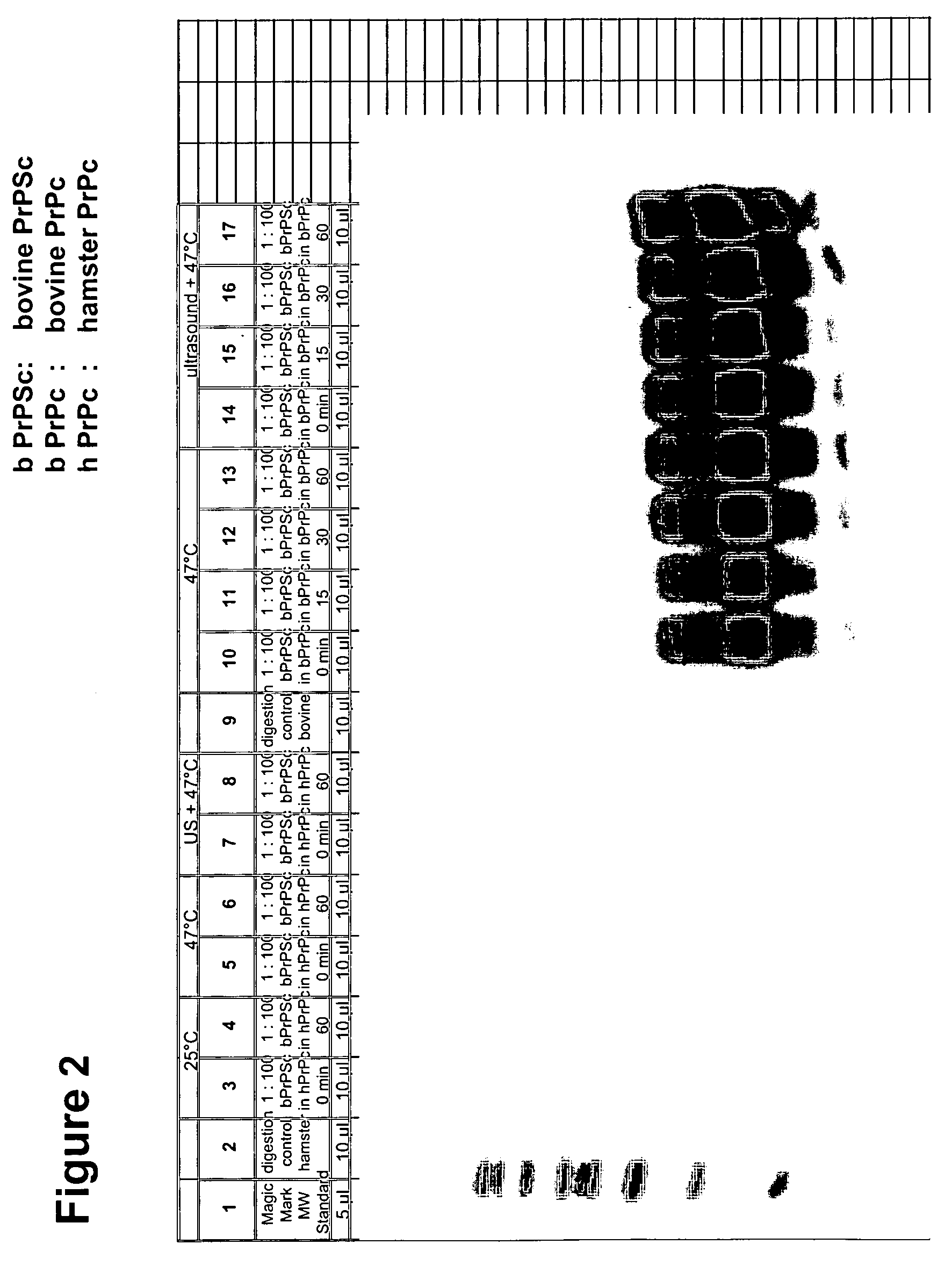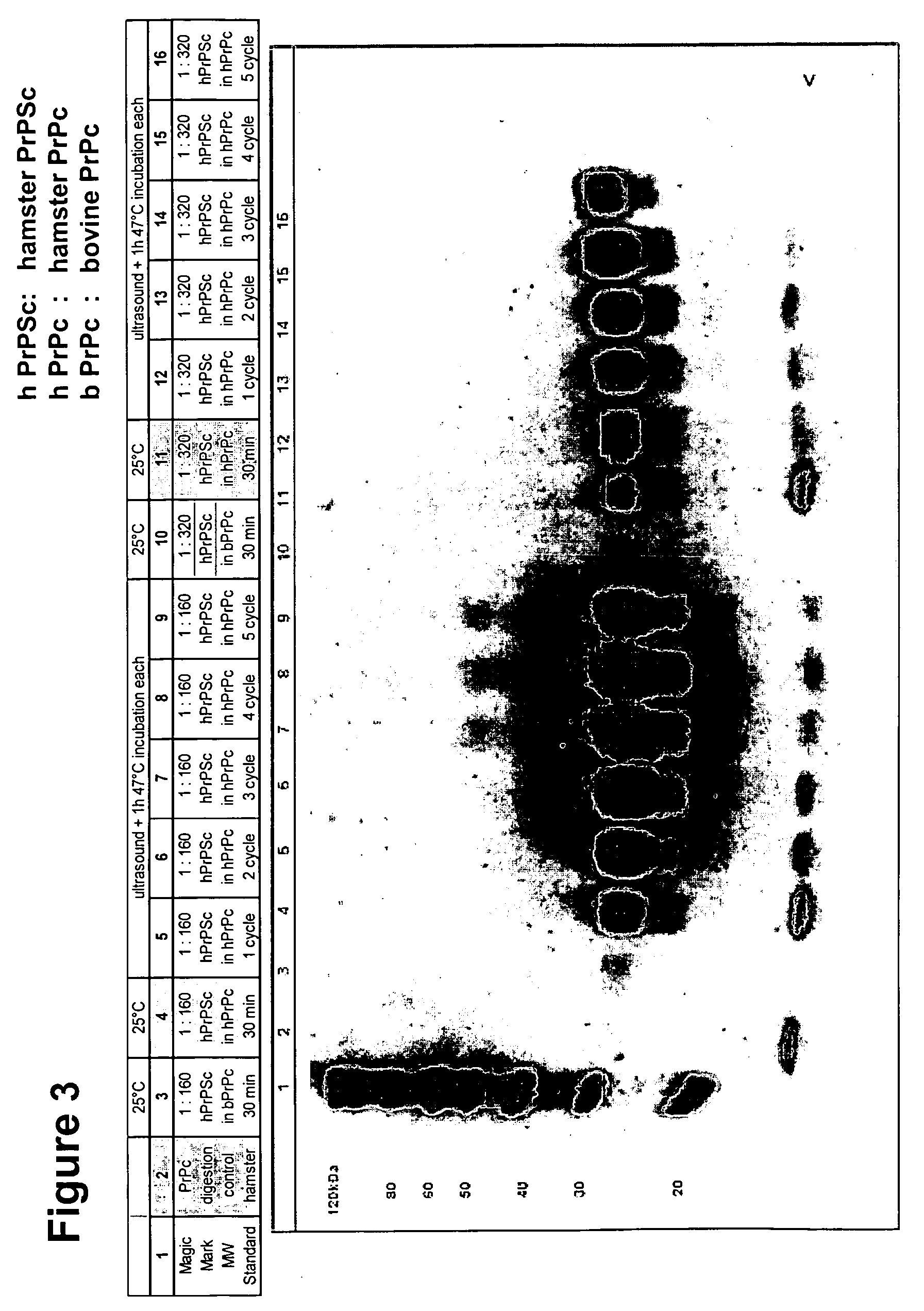Detection of protease-resistant prion protein following a spontaneous transformation reaction
- Summary
- Abstract
- Description
- Claims
- Application Information
AI Technical Summary
Benefits of technology
Problems solved by technology
Method used
Image
Examples
specific embodiments
EXAMPLE 1
Amplifying Bovine PrPSc by Means of a Spontaneous Transformation Reaction
[0042] BSE-bovine brain homogenate (20% in 10% sucrose, Ribolyser), which was obtained from the obex region of the medulla oblongata (VLA case 99 / 00946), was diluted 100-fold with ice-cold:
(a) normal bovine brain homogenate which was obtained from the obex region of the medulla oblongata (10% homogenate in PBS buffer containing protease inhibitor cocktail complete, Roche Diagnostics, +0.5% Triton X100), or
(b) 10% normal hamster brain homogenate (10% homogenate in PBS buffer containing protease inhibitor cocktail complete, Roche Diagnostics, +0.5% Triton X100).
[0043] The hamster homogenate (hamster PrPc) was used as a control for comparison with bovine PrPc.
[0044] The homogenates were prepared using a Ribolyser appliance in homogenization vessels containing Hybaid ceramic beads. After homogenizing normal brains in PBS buffer containing protease inhibitor cocktail complete, Triton-X100, as previo...
example 2
Amplifying Hamster PrPSc by Means of a Spontaneous Transformation Reaction
[0052] Hamster scrapie brains were homogenized in Hank's balanced salt solution using a sterile tissue comminutor to obtain a 10% homogenate; the homogenate was then centrifuged at about 2000 g for 15 min. The supernatant which resulted was stored at −70° C.
[0053] 10% homogenates of normal hamster brain were prepared in ice-cold PBS buffer, containing protease inhibitor cocktail, Roche Diagnostics, using an Ultraturrax homogenizer. Triton-X100 was added to a final concentration of 0.5% and the samples were centrifuged at 3000 g for 3 min in an Eppendorf centrifuge. A 10% homogenate of bovine brain from the obex region of the medulla oblongata was prepared as a control.
[0054] Supernatants from normal brains were mixed with hamster scrapie brain homogenate (1:160, 1:320). 60 μl aliquots were subjected to the following treatment steps and investigated in FIG. 3:
Molecular weight markers: FIG. 3, lane 1
Norma...
PUM
 Login to View More
Login to View More Abstract
Description
Claims
Application Information
 Login to View More
Login to View More - R&D
- Intellectual Property
- Life Sciences
- Materials
- Tech Scout
- Unparalleled Data Quality
- Higher Quality Content
- 60% Fewer Hallucinations
Browse by: Latest US Patents, China's latest patents, Technical Efficacy Thesaurus, Application Domain, Technology Topic, Popular Technical Reports.
© 2025 PatSnap. All rights reserved.Legal|Privacy policy|Modern Slavery Act Transparency Statement|Sitemap|About US| Contact US: help@patsnap.com



